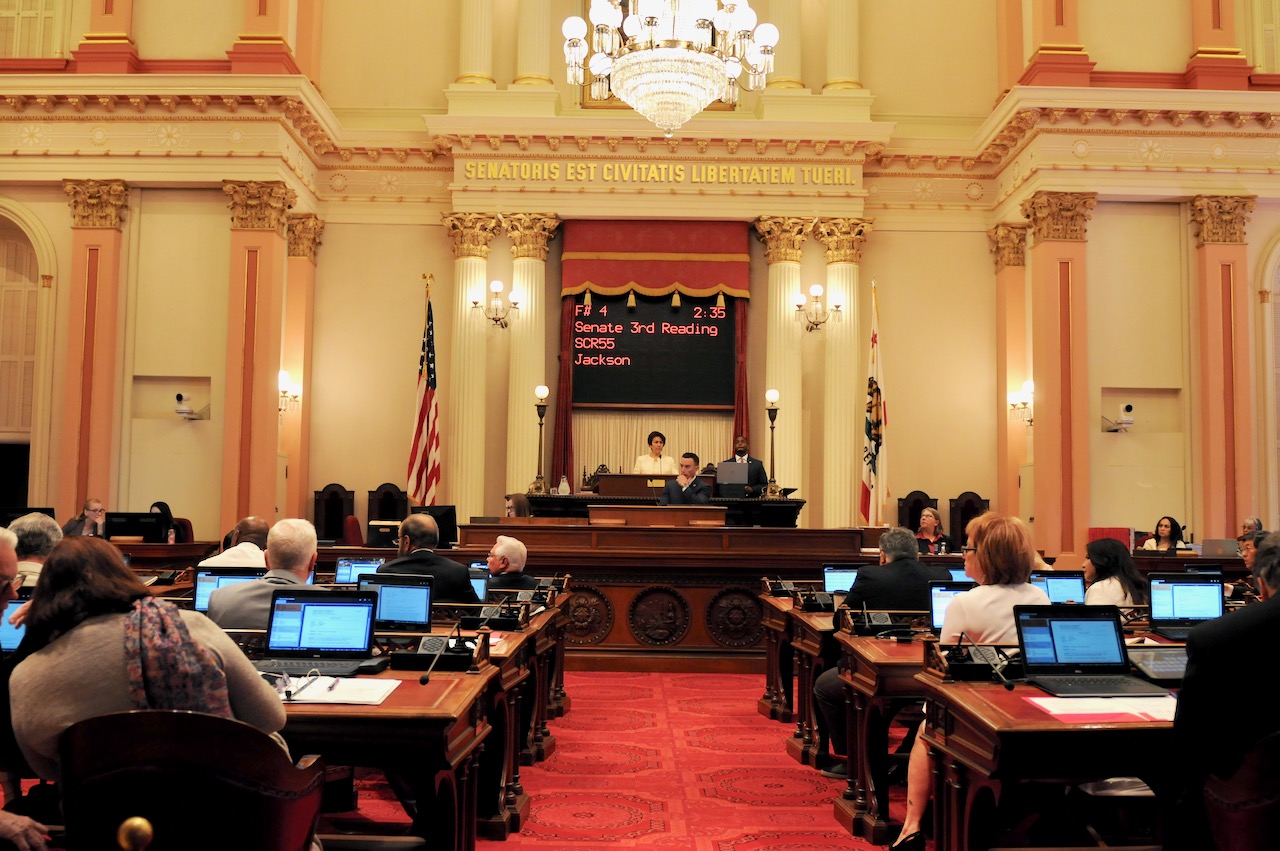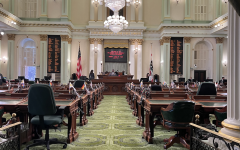
California State Capitol. (Photo: Kevin Sanders for California Globe)
Frequently Asked Questions About California End-of-Session Items
What are the Inactive Files?
By Chris Micheli, February 8, 2024 3:30 am
How many times can a bill be reconsidered? Regarding the reconsideration of bills, the same rule applies whether a bill is in committee or on the Floors of the Assembly or Senate. Only one reconsideration is in order. The first time a bill fails, it can be granted reconsideration. However, if it fails a second time, that is it. There is not a second reconsideration and, as a result, the bill has failed passage if it fails a second time after having been reconsidered.
How many times can a bill be placed on call? There is no rule on this. In other words, the Joint Rules, Senate Rules, and Assembly Rules do not cover the number of times a bill can be placed “on call,” whether it is in committee or on the Floor of either the Senate or Assembly. This question is also not covered in Mason’s Manual. The rules of the two houses state that “the call is continued by a majority vote of the Members present.”
What is the “72-Hour In-Print Rule”? A bill cannot be passed or become a statute unless that bill and any amendments have been in print and published on the Internet for at least 72 hours before the vote, unless the Governor has submitted a statement that the bill is needed to address a state of emergency. As a result, with the planned September 14 adjournment date, bills would have to be in their “final form” by midnight on Monday, September 11.
What are the Consent Calendars? There are different rules between the Senate and Assembly regarding what is a measure for the consent calendar on their Floors. For example, under Senate Rule 28.3(a), if a Senate bill or Assembly bill is amended in the Senate to create a new bill or to rewrite the bill, a standing committee may not place the bill on its consent calendar. There is also a “special consent” calendar used on the Senate Floor, as well as occasionally the “batching” of bills on the Assembly Floor. These items are covered in detail in a separate article.
What are the Inactive Files? Bills taken off of the Senate Inactive File are returned to the Second Reading file. In the Assembly, bills previously on Third Reading that are moved to the Inactive File are subject to a “one-calendar-day notice” when removed from the Inactive File and those bills are actually returned to the Third Reading file.
Can policy committees meet during the last two weeks of session? With a rule waiver, committees can meet during this time period. Under Senate Rule 29.10 and Assembly Rule 77.2, dealing with bills that have been substantially amended in the other house and are referred back for a policy committee hearing, those committee hearings are not subject to the prohibition on committees meeting during the final two weeks of Session.
What are “Double Jointing” amendments? Double jointing amendments are amendments to a bill providing that the amended bill does not override the provisions of another bill where both bills propose to amend the same section of law. Double-jointing amendments are used to prevent the problem of chaptering-out.
What are “Contingent Enactment” amendments? Contingent enactment means there is a section in a bill indicating that it is to become operative only upon the enactment of another measure.
Are there limits on Floor amendments? There are limitations to making floor amendments in both houses. For example, under Assembly Rule 69, a motion to amend on the Floor is not in order the last seven days before the interim recess or the final recess, unless this rule is suspended by a 2/3 majority vote. The rule does not apply to adding or deleting an urgency clause or adopting double-jointing amendments.
What is a Concur/Non-Concur vote? Under Joint Rule 26.5, a motion to concur or not concur is not in order until the Legislative Counsel’s Digest has appeared in the Daily File. However, the motion is in order even if the Digest has yet to be printed as long as an analysis of the bill has been prepared and distributed to Members on the Floors (which is done by having the analyses on their laptop computers at their desks). In addition, this rule can be suspended by a majority vote of the house’s Members.
How do Senate and Assembly Floor Analyses differ? The Senate floor analyses list support and opposition positions, but the Assembly does not list any positions on their floor analyses.
Can vote changes be made in either house? The Assembly allows its Members to add or change votes after the vote has been announced, so long as the final vote is not impacted. The Senate does not allow this, except for the President pro Tempore and the Republican Leader, so long as the final outcome of the bill is not affected. This is pursuant to Senate Rule 44.
What is a Parliamentary Inquiry? A parliamentary inquiry is a procedural question posed to the presiding officer by a legislator during a committee hearing or a Floor session.
What is a Point of Personal Privilege? A “a point of personal privilege is an assertion by a Member that his or her rights, reputation, or conduct have been impugned, entitling the Member to repudiate the allegations.”
Is an adjournment motion always in order? In the California Legislature, an adjournment motion is not in order if a bill is still “on call” (see, for example, Senate Rule 42). Once the call is lifted, then a motion to adjourn can be made.
When can Budget Trailer Bills be enacted? Budget trailer bills can pretty much be enacted any time after the budget bill has passed as long as there is a nominal appropriation in the bill and it is tied by language to the budget bill (and the trailer bill number is listed in the budget bill). And, this can be done by a majority vote on each Floor of the Assembly and Senate.
What does “Pass on File” mean? A bill author may choose to “pass on file,” thus temporarily giving up his or her opportunity to take up a measure on the Floor of the Assembly or Senate.
What does “Pass and Retain” mean? In the Assembly, “pass and retain” precludes the author from taking up his or her bill for that legislative day. The Senate does not recognize a difference between these two actions.
Why are Letters to the Daily Journal used? A Letter to the Daily Journal, which is generally used to express legislative intent or explain the purpose of a bill, is published in the journal of the bill’s house of origin. It is signed by the bill’s author and requires approval by both the majority and minority leaders in that house as a general rule. If there are objections, a letter can be printed with a majority vote of the body.
- Valuation for Eminent Domain - December 31, 2025
- Third Quiz on Where Areas of Law Are Found in the California Codes - December 30, 2025
- Management of Unclaimed Property - December 30, 2025




